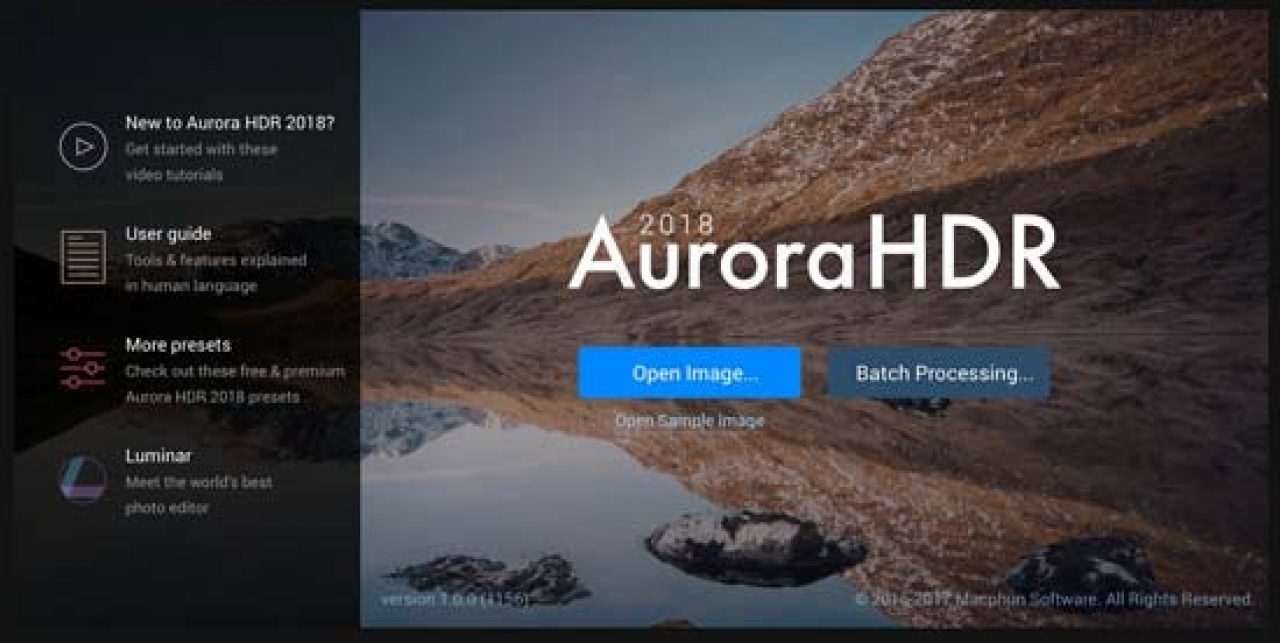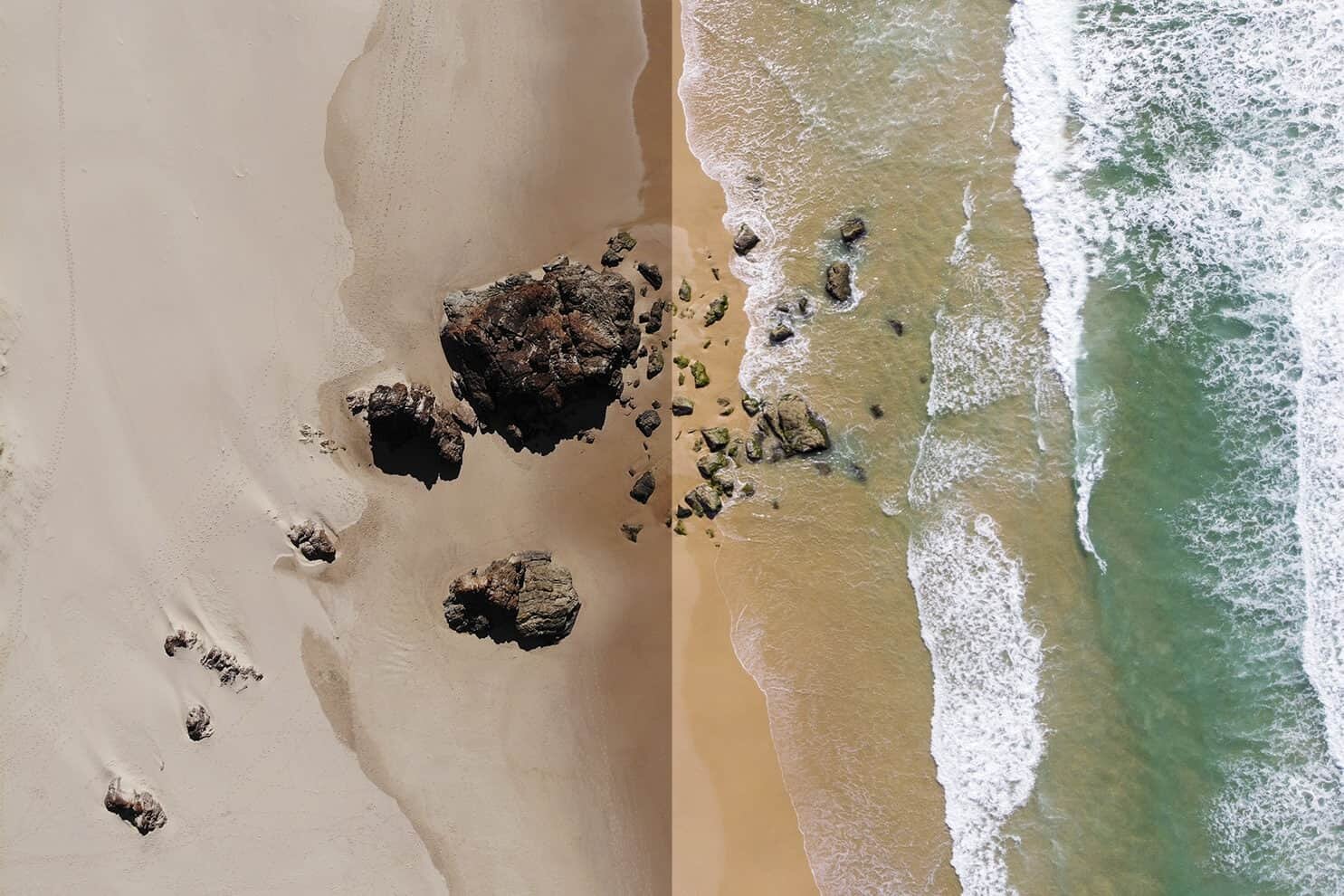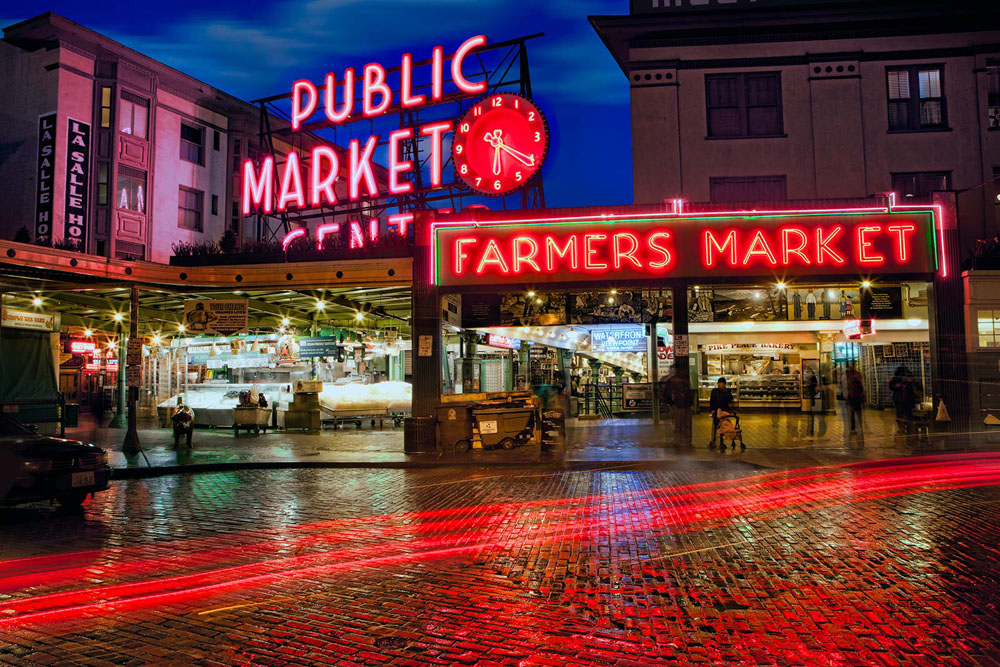My Comparison: Aurora HDR 2019 vs Aurora HDR 2018
With HDR-specific tools like HDR Denoise and HDR Structure, among a variety of others, Aurora is recognized as the world’s best HDR software by photographers around the globe. Luminar 4 is an innovative AI software that focuses on time-saving edits and creativity. Following on with the launch of Luminar, a Lightroom alternative, in November 2016, Skylum quickly became a force on the editing scene due it’s user friendly programs. Fast forward to 2018, updates have been rolling in for Luminar and the brand new Aurora HDR 2019 is going to be ready for download in early October.
Aurora HDR has become the gold standard of HDR (High Dynamic Range) processing. It’s latest incarnation and major update is Aurora HDR 2019. I’ve been using the previous version, Aurora HDR 2018 since it came out more than a year ago. I like it and gave it a favorable review at the time. When I saw recently that Aurora HDR 2019 was available I thought it only natural to give it a workout and see if Skylum was able to improve an already good product, enough to warrant an upgrade. Here’s what I found.
**Skylum offers a free trial of this software, there are links and discount codes at end of this article**
Bottom line first
Is it worth upgrading to 2019 if you own 2018? I think so. Is it worth buying it outright if you don’t already own it? In most cases this a yes also. If you read my review of 2018 you’ll see I like using Aurora HDR for single image processing. I was pleasantly surprised that 2019 has improved significantly, not only for single image processing but also for traditional HDR processing of bracketed exposures. Skylum’s new Quantum HDR engine provides a more natural staring point for both and has all but eliminated noise as well. Although there are some new features and interface changes, the quality of the result and efficiency in getting there are the main reasons to own Aurora HDR 2019.
The best part

The most important and significant update in HDR 2019 is what Skylum calls the Quantum HDR Engine. Catchy names aside, it really works well. I tried several types of images shot under various conditions and the results before making any adjustments were outstanding. This held true for both single images and brackets. Furthermore I’m thrilled that Skylum paid attention to those of us that favor using single images. The starting points for either are very natural looking. In my book this is big because I don’t have to spend much time attaining a natural result and if I do want to go grunge or have an obvious HDR look it’s still very easy. In the previous version the initial result was less natural and it could take some work to get to get a natural feel. Another big benefit of the new engine is that results have far less noise than previously.

There’s more

Coupled with the markedly improved processing engine are some newer and really useful presets. What this means is you can often get right where you want to go very quickly. If your image isn’t stellar up front, in many cases it can be nearly perfect with one click. As with 2018 you can just adjust the overall application of the preset with a slider (0-100%) to tweak it to your needs. Then if you still want to make some more adjustments you have a myriad of tools in the side panel.
Also new in this 2019 version is the LUT (Lookup Table) Mapping feature allowing you to create cinematic, black and white, vintage and numerous other looks simply by selecting a LUT from the pulldown menu with the option of adding your own LUTs you find online or create yourself. I also like the opacity slider for LUTs that are a little heavy handed or if I just want a light touch of the look provided by the LUT. Skylum has had LUTs in Luminar for some time and it exists in other software as well. So this feature is more handy than it is essential. Nonetheless it’s nice to have available if you want it.

Workflow
My approach with using Aurora HDR 2019 is that I view it as a starting point and plan to hop into Luminar and/or other software as needed to finish my image. With 2019 the starting point is much better than the previous version so I’m more likely to use it in the first place and it saves me time overall. Although there may not be many folks out there that would have Aurora HDR as their sole processing toolset, Skylum takes into account that every user has different needs. So there are a lot of tools available in 2019 that give you the potential to get a final or near final image.
Other differences
The layout is better organized now with HDR Enhance, formerly a single slider under HDR Basic in the previous version. It is now a dedicated panel with 4 sliders including HDR Clarity, HDR Smart Structure, and HDR Microstructure. I also find the results of the new implementation to be a little more refined and aesthetically pleasing. In 2018 you could enhance detail and sense of depth using HDR Structure and then intensifying that if wanted, by using the Boost. In 2019 it’s a little easier and user friendly with the HDR Smart Structure slider essentially replacing the 3 previous sliders. Then if you want more of a sense of depth you can use the HDR Clarity slider. This isn’t so much a game changer but certainly easier, more logical and enough of an improvement that it warrants mention.
Balancing noise and detail
I ran into some pretty large differences in noise between the two versions. With the night shot of St. Pierre church using 2018 I couldn’t bring the shadow noise down without severely smearing detail in other, more important areas of the image. I didn’t have that problem with 2019. Of course I could have created more layers with masking and try to selectively reduce the most offensive noise or take it into another program to work on the noise. And this doesn’t address the issue of the speckled sky which would also require more layers and masks to get it back to black. But the point here is that using HDR 2019 I have a very nice image without doing much of anything when I opened this challenging photo in 2019. All I had to do was bring down blacks for the sky and bring up shadows for the dark areas, all without bothersome noise.
Pros
• New HDR engine called Quantum HDR yields better results than 2018
• Noticeably better initial processing/starting points than 2018 including single images
• Substantially better noise reduction
• More useful presets than 2018 allow for one click adjustments for many types of images
• Sunsets handled more naturally than in 2018
• Stark contrasts handled better than previous version
Cons
• Lags: When applying sliders or moving the image around at 100% it takes 2-3 sec. to redraw the image. This is nothing major, but an annoyance.
• Lack of ability to have more than one image (single or combined bracket) open at a time
• Masking needs to be fleshed out or perhaps just removed: No auto-edge masking and you can’t view grayscale. Also no ability to see luminosity masks without switching to another masking tool first
Conclusion
My goal was to try Aurora HDR 2019 and make a direct comparison with the already worthy 2018 version and see if there are enough differences to warrant buying the new version. If you’re upgrading it’s definitely worth $49/49€/42£ (with code WOLFSON). For those potential first time buyers I can’t think of anything else out there that comes close to the quality and ease of use for $89/89€/82£ (with code WOLFSON) Already the standard by which other HDR processors are measured, Aurora HDR has become a refined product with 2019 incorporating big improvements over the previous version. The greatest enhancement is the new Quantum HDR Engine yielding much better and more natural looking starting points, major noise improvements, and better handling of large disparities in exposure, especially areas adjacent to each other.
With all the images I tried I only ran across one where I liked the starting point better in 2018, but only slightly. I should note this was a daytime shot at ISO 100 on a tripod so not as challenging as many of the other images I tried.
Even though there are some new features like LUTs and improved interface and controls, the real reasons to upgrade are simply the outstanding quality, reduced noise, and great presets that will help you obtain a beautiful final image and spend less time than without it, or even with 2018.
You can try before you buy with a free trial. Click on this link and then hover your mouse pointer over the Aurora HDR menu at the top and you’ll see the free trial option.
Happy Shooting! (and processing)
Joel
How To Use Aurora Hdr
Joel Wolfson is an internationally published photographer who loves teaching as much as shooting. He shares his 30 years of experience as a working pro with other photographers and enthusiasts by way of his workshops, 1 on 1 training,webinars, articles, blog and speaking engagements. His technical articles have been translated for use in more than 30 countries yet he is best known for his artistic images of nature’s fleeting moments and unexpected views of everyday places around the globe. He is one of the pioneers of digital photography having conducted digital photography seminars for Apple and other corporations starting in the early 90s. His roster of notable clients includes numerous publications and fortune 500 companies. He currently works with great affiliates like Arizona Highways, Topaz Labs, ON1, and Skylum to have more avenues for working with those wanting to pursue their love of photography. His goal is to make learning and improving one’s photography easy, fun and rewarding.
Disclosure about product links and affiliations: Some of the links I provide are affiliate links which means I get a small commission, with no additional cost to you, if you click it and end up buying something. It helps keep the lights on as well as supporting this blog and my other free educational resources and articles. So if you use them, thanks! It is always my goal to report my results in a straighforward manner whether or not it favors a particular product.
| Formerly | Macphun |
|---|---|
| Industry | Software development |
| Genre | Photo editing |
| Founded | 2008, Ukraine |
| Headquarters | Bellevue, Washington |
| Dmitry Sytnik (Co-founder, Managing Partner), Paul Muzok (Co-founder, Managing Partner), Alex Tsepko (Managing Partner), Ivan Kutanin (Managing partner), Oksana Milczarek (COO) | |
Number of employees | 150 |
| Website | skylum.com |
Skylum (formerly Macphun) is a software developing company based in Bellevue, Washington. It is most known for its photo editing software Aurora HDR and Luminar.[1] Skylum is also the developer of Snapheal, Focus, Tonality, Intensify, Noiseless and FX Photo Studio.[2]
Founded as Macphun in 2008, the company decided to change its name to Skylum in 2017, following the decision to develop its Mac only software for Windows as well.[3]
Aurora Hdr Vs Luminar 4

History[edit]
Skylum was founded as Macphun in 2008 by two gaming developers and amateur photographers, Dmitry Sytnik and Paul Muzok. Initially the company developed applications for iOS. One of its first applications was Vintage Video Maker, which was later named Vintagio. In 2009, Apple named Vintagio among Best iPhone apps of the year.[4][5] Alex Tsepko, Ivan Kutanin & Oksana Milczarek joined the team few years later. In total, the company released over 60 applications in the first three years. However, it saw the greatest number of downloads in the photography applications. Skylum thus decided to develop the same photography applications for macOS.[6]
In early 2010, Skylum launched its first macOS application, FX Photo Studio Pro, which was earlier available for iOS only.[7] Several other applications were also developed for macOS including Snapheal.[8]
In order to tap the North Americas, the company moved its headquarters to San Diego, United States in 2013.[6] A great number of employees came from the Nik Collection, which was earlier acquired by Google.[9] Later that year, the company launched Intensify, a fully featured photo editing software, that was named among 2013 Best Mac App Store apps. In 2014, Skylum launched Tonality, a black-and-white photo editor software, that won Apple’s Editors’ Choice of the year.[10] The same year, Skylum hired a team in Europe to develop localized versions of its software and start European expansion.[6]
In 2015, Skylum released a new image noise reduction application called Noiseless.[11] Same year Skylum partnered with Trey Ratcliff to develop an HDR program. Through the collaboration Aurora HDR, a High Dynamic Range editing and processing tool, was released in November.[12] A year later, Skylum developed Luminar, an all-in-one photo editing software as an alternative to Adobe’s Lightroom. Both the software became the most known applications by the company. [13]
In 2017, the company released Aurora HDR and Luminar for Windows - software that previously was available for macOS only.[14] At the same time, it was also announced that Macphun would change its name to Skylum.[15]
Products[edit]
Skylum is most known for its photo editing software, Aurora HDR launched in 2015, and Luminar launched in 2016. Other notable software by the company include: Snapheal, Focus, Tonality, Intensify, Noiseless, FX Photo Studio, and Photolemur.
Skylum products have been recognized with multiple awards. In 2019, Skylum took home four gold awards at the Digital Camera Grand Prix. The company was honored for innovation in the photo editing sphere with its Luminar 4, Aurora HDR 2019, and Photolemur[16] editing software. Skylum also took home a technical award for its innovative approach. In 2017 Luminar and in 2019 Luminar Flex was named the Best Software Plugin in the Lucie Technical Awards.[17] In the same years, Luminar was awarded the Best Imaging Software by TIPA. In 2018, Luminar was named an Editor’s Pick by Outdoor Photographer.[18]
References[edit]
- ^Thurston, Anthony (June 16, 2017). 'Macphun brings AI tech to photo editing with Luminar Neptune Skylum'.
- ^Pierini, David (May 24, 2017). 'Macphun to offer software for Windows-based photogs'.
- ^Scoblete, Greg (November 2, 2017). 'MACPHUN IS NOW SKYLUM, SETS SIGHTS ON DISAFFECTED LIGHTROOM USERS WITH LUMINAR 2018'.
- ^'iPhoneで撮った動画を8ミリやサイレント映画風にする「Vintage Video Maker」'. November 19, 2009.
- ^'MacPhun LLC Company Profile'(PDF). Retrieved February 24, 2018.
- ^ abcLaurinavicius, Tomas (November 21, 2016). 'An In-Depth Look At The Future Of Digital Photography With Alex Tsepko Of Macphun'.
- ^'Review: FX Photo Studio Pro for Mac, fun photo editing done right'. May 20, 2011.
- ^Chang, Alexandra (December 16, 2011). 'Snapheal removes unwanted objects from photos, and more'.>
- ^Freeman, Mike (November 29, 2013). 'Photo software firm Macphun comes to San Diego'.
- ^Dove, Jackie (July 31, 2014). 'Review: Macphun's Tonality brings out your inner Ansel Adams'.
- ^Carlson, Jeff (October 9, 2015). 'Noiseless and Noiseless Pro review: Clean up your photos shot in low-light conditions'.
- ^Mathies, Daven (May 24, 2017). 'Macphun's highly lauded photo software are coming to Windows for the first time'.
- ^Lawton, Rod (November 17, 2016). 'Both products became the most known applications by the company. MacPhun Luminar 1.0 review'.
- ^Lestoc, Costea (June 10, 2017). 'Macphun's Luminar and Aurora HDR apps come to Windows 10 this fall'.
- ^Zhang, Michael (October 27, 2017). 'Macphun Renaming Itself Skylum as its Photo Apps Land on Windows'.
- ^'Luminar 4, Aurora HDR 2019, and Photolemur'.
- ^'Lucie Technical Awards'.
- ^'Outdoor Photographer'. December 12, 2018.
